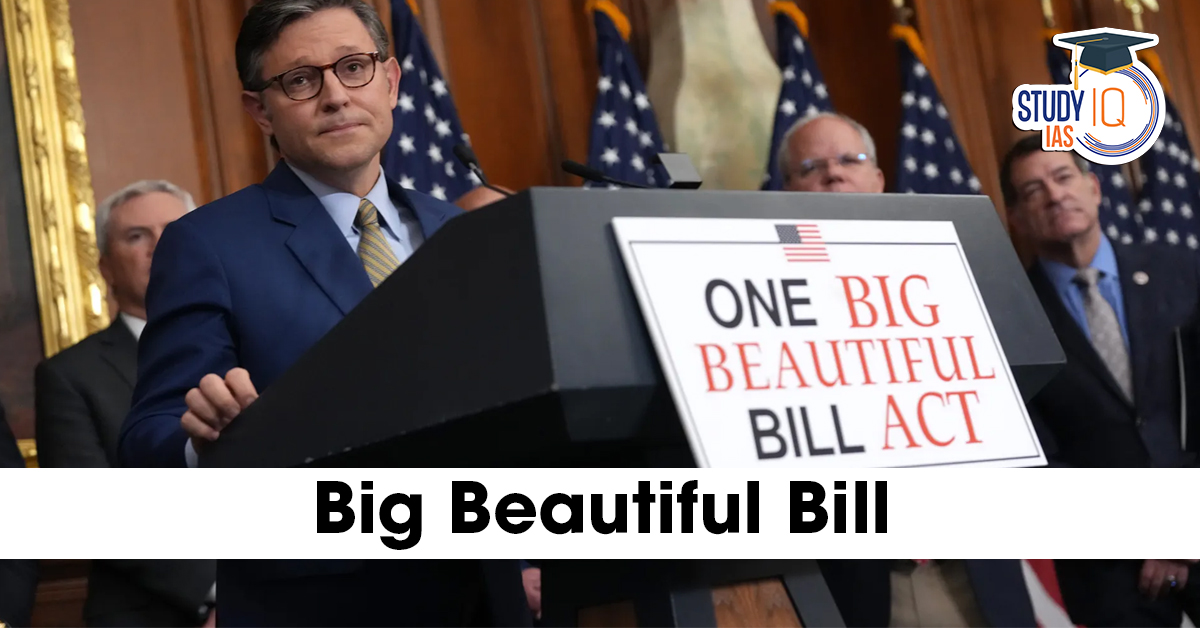Table of Contents
On July 3, 2025, the U.S. Congress passed one of the most ambitious and controversial legislative packages in American history: the “Big Beautiful Bill”. Championed by President Donald Trump during his second term, the bill is a sprawling tax-and-spending package designed to cement his campaign promises and reshape the nation’s economic and social framework.
Nicknamed the “Big Beautiful Bill” by Trump himself, the legislation reflects his administration’s priorities, from permanent tax relief and military expansion to drastic cuts in healthcare and welfare programs. Though celebrated by Republicans, it has sparked fierce opposition for its projected addition of trillions to the national debt and its impact on low-income Americans.
What is the USA Big Beautiful Bill?
The “Big Beautiful Bill” is the nickname given by U.S. President Donald Trump to his 869-page flagship tax and spending legislation, which passed Congress on July 3, 2025, and was signed into law on Independence Day, July 4, 2025. Officially a budget and tax overhaul package, this bill represents one of the most consequential legislative efforts of Trump’s second term and is aimed at reshaping U.S. economic, welfare, and immigration policies.
Despite intense controversy and a razor-thin margin in the House of Representatives, the bill was passed, fulfilling several of Trump’s key campaign promises.
Key Provisions of the Trump’s Big Beautiful Bill
1. Extension of Trump-Era Tax Cuts
-
Permanent Tax Reductions: Extends and makes permanent the 2017 Tax Cuts and Jobs Act.
-
Standard Deduction Increase:
-
+$1,000 for individuals
-
+$2,000 for married couples (through 2028)
-
-
Wealth Distribution Concern: Critics argue it disproportionately benefits higher-income earners.
2. Massive Cuts to Medicaid
-
New Work Requirements:
-
From 2026, childless adults must work at least 80 hours/month to qualify.
-
-
Frequent Re-Enrollment: Every six months, with stricter income and residency checks.
-
State Funding Reductions: Cuts state tax mechanisms used to support Medicaid, endangering rural hospitals.
-
Estimated Impact: Up to 17 million Americans could lose healthcare coverage.
3. Reform to Food Assistance (SNAP)
-
State Contribution Mandate: States with high error rates must pay 5–15% of SNAP program costs.
-
Work Requirements: Imposed on able-bodied adults without dependents.
-
Implementation Year: 2028.
4. Mass Deportation and Immigration Crackdown
-
Funding Boost: Bill allocates billions to mass deportation operations.
-
Supreme Court Backing: Trump now has legal authority to bypass judicial injunctions, allowing faster removals.
5. Social Security Tax Deduction
-
No Full Elimination: Contrary to campaign promises, Social Security income isn’t fully tax-free.
-
Temporary Relief:
-
$4,000 deduction for seniors 65+ (2025–28)
-
Senate bill increases it to $6,000 for individuals earning ≤ $75,000.
-
6. SALT Deduction Raised
-
Cap Increase: Raises the state and local tax deduction cap from $10,000 to $40,000.
-
Duration: 5 years before reverting.
-
Political Debate: A major issue among Republicans in high-tax states.
7. Rollback of Clean Energy Incentives
-
Biden-Era Credits Phased Out:
-
Full tax credits allowed for 2025 construction starts
-
Reduced to 60% in 2026, 20% in 2027, and eliminated in 2028.
-
-
Supply Chain Limits: Firms with ties to “foreign entities of concern” (e.g., China) are excluded.
-
Backlash: Led to a feud between Trump and Elon Musk over EV and solar subsidies.
8. No Tax on Tips and Overtime
-
Tax Relief for Workers: Deducts certain tip wages and overtime earnings from income tax.
-
Phased Out for Higher Incomes: Starts phasing out at $150,000 for individuals, $300,000 for couples.
-
Expiry: 2028.
9. Debt Ceiling Raised
-
Debt Ceiling Hike:
-
Raised by $5 trillion
-
Higher than the House-proposed $4 trillion
-
-
Justification: To cover expenses already authorised by Congress and avoid a government shutdown.
Political Impact of the Big Beautiful Bill
-
Trump’s Influence: The bill underscores Trump’s complete control over the Republican Party, despite internal resistance.
-
Democratic Opposition: Strong criticism over wealth redistribution and stripping safety nets.
-
Future Elections: Democrats aim to leverage public outrage to reclaim the House in the 2026 midterms.
-
GOP Infighting: Fiscal hawks and moderates clashed over budget concerns and welfare cuts.
Public Reaction
-
Supporters: Hail the bill as a cornerstone of economic revival and national security.
-
Opponents: Warn of massive inequity, healthcare losses, and an exploding national deficit.
-
CBO Estimate: The bill could add $3.4 trillion to the deficit over the next decade.
Conclusion
The Big Beautiful Bill is more than just a legislative package—it’s a statement of President Trump’s second-term priorities. While it delivers major wins for conservatives in terms of tax cuts, defence spending, and immigration control, it also raises serious concerns over its fiscal sustainability and humanitarian consequences.


 Iran Nuclear Crisis and India’s Role f...
Iran Nuclear Crisis and India’s Role f...
 H1B Visa Program, Beneficiaries, Eligibi...
H1B Visa Program, Beneficiaries, Eligibi...
 Comparison Between India & France's ...
Comparison Between India & France's ...

























